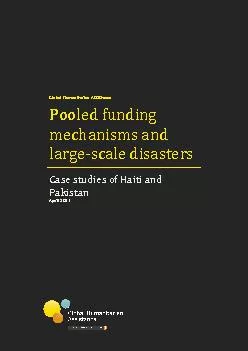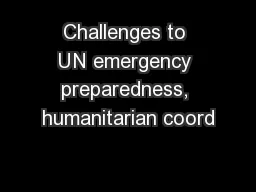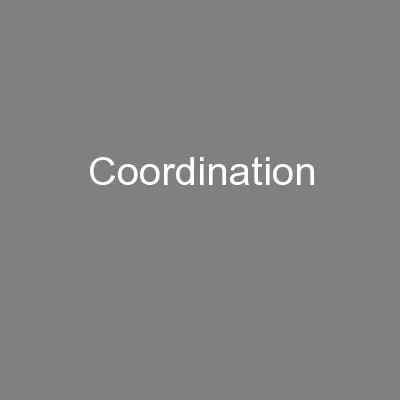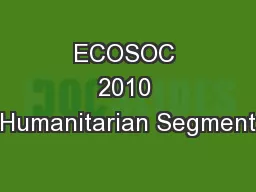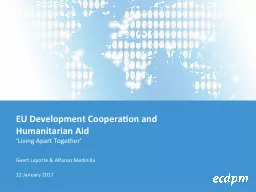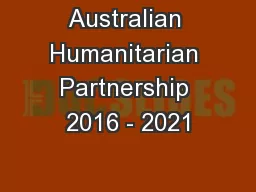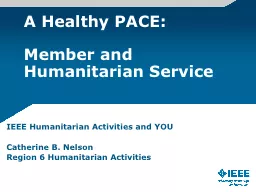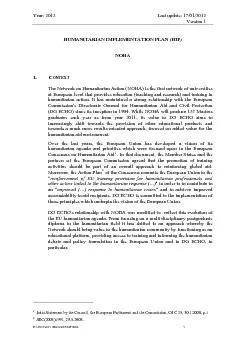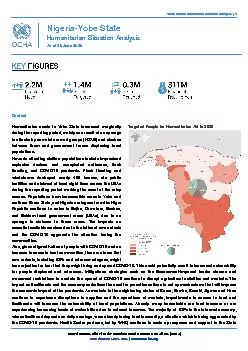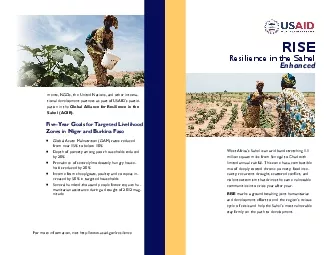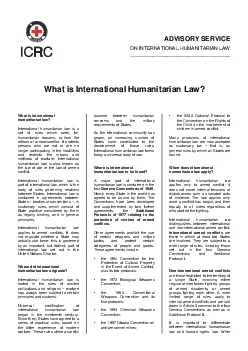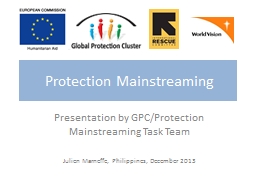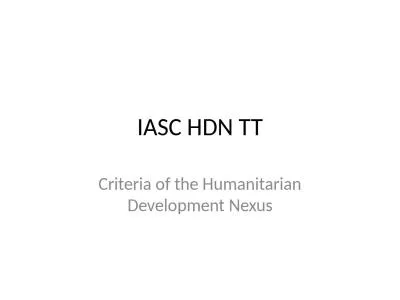PDF-Global Humanitarian Assistance
Author : trish-goza | Published Date : 2015-09-27
Pooled funding mechanisms and large scale disasters Case studies of Haiti and Pakistan April 2011 Contents Natural disasters and pooled financing mechanisms
Presentation Embed Code
Download Presentation
Download Presentation The PPT/PDF document "Global Humanitarian Assistance" is the property of its rightful owner. Permission is granted to download and print the materials on this website for personal, non-commercial use only, and to display it on your personal computer provided you do not modify the materials and that you retain all copyright notices contained in the materials. By downloading content from our website, you accept the terms of this agreement.
Global Humanitarian Assistance: Transcript
Pooled funding mechanisms and large scale disasters Case studies of Haiti and Pakistan April 2011 Contents Natural disasters and pooled financing mechanisms . November 2013. Harry Shannon. McMaster University. Working with. David Sanderson. . Director, Centre for Development and Emergency Practice (CENDEP), Oxford Brookes University. Charles . Parrack. , . events. Study released in summer 2014. Carried out in cooperation with UNDP and OCHA. Study carried out by UNIDIR (Borrie and . Caughley. ). Oslo. . conference . summary point #1:. “It is unlikely that any state or international body could address the immediate humanitarian emergency caused by a nuclear weapon detonation in an adequate manner and provide sufficient assistance to those affected. . mechanism . and partnership in emergency response. Introduction. An emergency situation can be defined by a high Mortality Rate in a given population.. Certain situation: Population Displacement, conflict, natural disaster, immediately present high CMR or consistent risks of rapid degradation involving high mortality.. Side Event: Challenges for Gender Equality Programming in Humanitarian Action. . Gender Dimensions of Operating in Complex Security Environments. Martin Mogwanja . Humanitarian Coordinator, Pakistan. Programme. Presentation by . Agnè. s Marcaillou . Director of the United Nations Mine Action Service. New York, 17 . March 2016. . Overview. UNMAS is the United . Nations expert . entity on explosive hazard threat mitigation, management and response.. ‘Living . Apart . Together’. Geert Laporte & Alfonso . Medinilla. 12 January 2017. Outline. The EU in the development and humanitarian landscape. The EU and the Humanitarian-Development Nexus: . Briefing - 17 May 2016 . Agenda . Agenda. Session . Lead . 1000. – 1020. 1. Humanitarian Partnership with ANGOs – key features. Michael Hassett . 1020 – 1040. 2. Competitive Grant Process. . IEEE. . Humanitarian Activities and YOU. Catherine B. Nelson. Region 6 Humanitarian Activities. IEEE Humanitarian Activities. Humanitarian . Activities Committee (2016. ) Laura . Jacobs, Chair . SIGHT. Year: 2012 Version 1 Joint Statement by the Council, the European Parliament and the Commission, OJ C 25, 30.1.2008, p.1 SEC(2008)1991, 29.5.2008. Year: 2012 Version 1 ECHO/NOH /BUD lysis | 1 United Nations Office for the Coordination of Humanitarian Affairs (OCHA) Coordination Saves Lives | www.unocha.org Context Humanitarian needs in Yobe State increase d marginally during t For more information visit http//wwwusaidgov/resilience ments NGOs the United Nations and other interna-tional development partners as part of USAIDs partici-pation in the West Africas Sahel is an ari some of their rules are similar these two bodies of law have developed separately and are contained in different treaties In particular human rights law unlike international humanitarian law applies Presentation by GPC/Protection Mainstreaming Task Team. Julien Marneffe, Philippines, December 2013. Objectives of workshop. Introduce Protection Mainstreaming . Present the 4 key Protection Mainstreaming principles. 5 Criteria of HDN. Collective Outcomes. Joint Planning and Analysis. Progressively Ending Needs. Government/Local Leadership. Protracted Response. Collective Outcomes. Achieving effective outcomes for people, particularly in fragile and crisis-affected environments, requires a different kind of collaboration among Governments, international humanitarian and development actors and other actors: one that is based on complementarity, greater levels of interoperability and achieving sustainable, collective outcomes rather than the coordination of individual projects and activities..
Download Document
Here is the link to download the presentation.
"Global Humanitarian Assistance"The content belongs to its owner. You may download and print it for personal use, without modification, and keep all copyright notices. By downloading, you agree to these terms.
Related Documents

